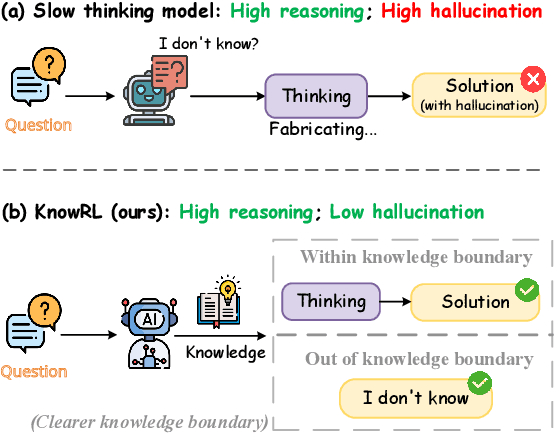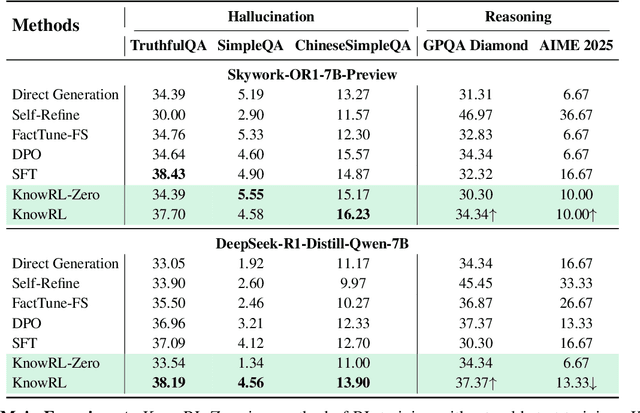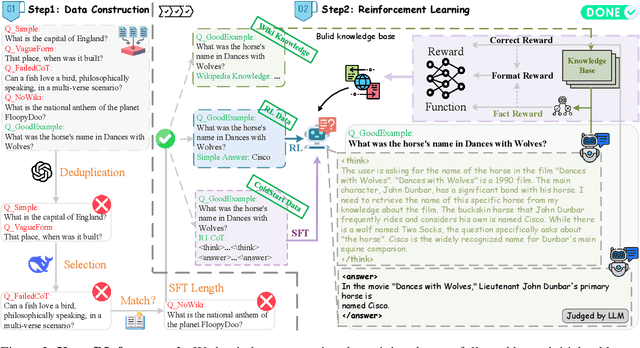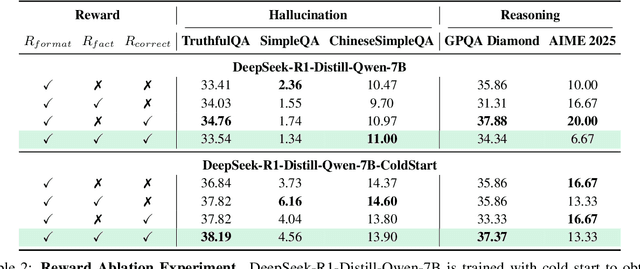Wenhao Yu
China University of Geosciences
Modified-Emergency Index (MEI): A Criticality Metric for Autonomous Driving in Lateral Conflict
Oct 31, 2025Abstract:Effective, reliable, and efficient evaluation of autonomous driving safety is essential to demonstrate its trustworthiness. Criticality metrics provide an objective means of assessing safety. However, as existing metrics primarily target longitudinal conflicts, accurately quantifying the risks of lateral conflicts - prevalent in urban settings - remains challenging. This paper proposes the Modified-Emergency Index (MEI), a metric designed to quantify evasive effort in lateral conflicts. Compared to the original Emergency Index (EI), MEI refines the estimation of the time available for evasive maneuvers, enabling more precise risk quantification. We validate MEI on a public lateral conflict dataset based on Argoverse-2, from which we extract over 1,500 high-quality AV conflict cases, including more than 500 critical events. MEI is then compared with the well-established ACT and the widely used PET metrics. Results show that MEI consistently outperforms them in accurately quantifying criticality and capturing risk evolution. Overall, these findings highlight MEI as a promising metric for evaluating urban conflicts and enhancing the safety assessment framework for autonomous driving. The open-source implementation is available at https://github.com/AutoChengh/MEI.
Understanding and Enhancing Mamba-Transformer Hybrids for Memory Recall and Language Modeling
Oct 30, 2025Abstract:Hybrid models that combine state space models (SSMs) with attention mechanisms have shown strong performance by leveraging the efficiency of SSMs and the high recall ability of attention. However, the architectural design choices behind these hybrid models remain insufficiently understood. In this work, we analyze hybrid architectures through the lens of memory utilization and overall performance, and propose a complementary method to further enhance their effectiveness. We first examine the distinction between sequential and parallel integration of SSM and attention layers. Our analysis reveals several interesting findings, including that sequential hybrids perform better on shorter contexts, whereas parallel hybrids are more effective for longer contexts. We also introduce a data-centric approach of continually training on datasets augmented with paraphrases, which further enhances recall while preserving other capabilities. It generalizes well across different base models and outperforms architectural modifications aimed at enhancing recall. Our findings provide a deeper understanding of hybrid SSM-attention models and offer practical guidance for designing architectures tailored to various use cases. Our findings provide a deeper understanding of hybrid SSM-attention models and offer practical guidance for designing architectures tailored to various use cases.
VOGUE: Guiding Exploration with Visual Uncertainty Improves Multimodal Reasoning
Oct 01, 2025



Abstract:Reinforcement learning with verifiable rewards (RLVR) improves reasoning in large language models (LLMs) but struggles with exploration, an issue that still persists for multimodal LLMs (MLLMs). Current methods treat the visual input as a fixed, deterministic condition, overlooking a critical source of ambiguity and struggling to build policies robust to plausible visual variations. We introduce $\textbf{VOGUE (Visual Uncertainty Guided Exploration)}$, a novel method that shifts exploration from the output (text) to the input (visual) space. By treating the image as a stochastic context, VOGUE quantifies the policy's sensitivity to visual perturbations using the symmetric KL divergence between a "raw" and "noisy" branch, creating a direct signal for uncertainty-aware exploration. This signal shapes the learning objective via an uncertainty-proportional bonus, which, combined with a token-entropy bonus and an annealed sampling schedule, effectively balances exploration and exploitation. Implemented within GRPO on two model scales (Qwen2.5-VL-3B/7B), VOGUE boosts pass@1 accuracy by an average of 2.6% on three visual math benchmarks and 3.7% on three general-domain reasoning benchmarks, while simultaneously increasing pass@4 performance and mitigating the exploration decay commonly observed in RL fine-tuning. Our work shows that grounding exploration in the inherent uncertainty of visual inputs is an effective strategy for improving multimodal reasoning.
Evolving Language Models without Labels: Majority Drives Selection, Novelty Promotes Variation
Sep 18, 2025Abstract:Large language models (LLMs) are increasingly trained with reinforcement learning from verifiable rewards (RLVR), yet real-world deployment demands models that can self-improve without labels or external judges. Existing label-free methods, confidence minimization, self-consistency, or majority-vote objectives, stabilize learning but steadily shrink exploration, causing an entropy collapse: generations become shorter, less diverse, and brittle. Unlike prior approaches such as Test-Time Reinforcement Learning (TTRL), which primarily adapt models to the immediate unlabeled dataset at hand, our goal is broader: to enable general improvements without sacrificing the model's inherent exploration capacity and generalization ability, i.e., evolving. We formalize this issue and propose EVolution-Oriented and Label-free Reinforcement Learning (EVOL-RL), a simple rule that couples stability with variation under a label-free setting. EVOL-RL keeps the majority-voted answer as a stable anchor (selection) while adding a novelty-aware reward that favors responses whose reasoning differs from what has already been produced (variation), measured in semantic space. Implemented with GRPO, EVOL-RL also uses asymmetric clipping to preserve strong signals and an entropy regularizer to sustain search. This majority-for-selection + novelty-for-variation design prevents collapse, maintains longer and more informative chains of thought, and improves both pass@1 and pass@n. EVOL-RL consistently outperforms the majority-only TTRL baseline; e.g., training on label-free AIME24 lifts Qwen3-4B-Base AIME25 pass@1 from TTRL's 4.6% to 16.4%, and pass@16 from 18.5% to 37.9%. EVOL-RL not only prevents diversity collapse but also unlocks stronger generalization across domains (e.g., GPQA). Furthermore, we demonstrate that EVOL-RL also boosts performance in the RLVR setting, highlighting its broad applicability.
Parallel-R1: Towards Parallel Thinking via Reinforcement Learning
Sep 09, 2025Abstract:Parallel thinking has emerged as a novel approach for enhancing the reasoning capabilities of large language models (LLMs) by exploring multiple reasoning paths concurrently. However, activating such capabilities through training remains challenging, as existing methods predominantly rely on supervised fine-tuning (SFT) over synthetic data, which encourages teacher-forced imitation rather than exploration and generalization. Different from them, we propose \textbf{Parallel-R1}, the first reinforcement learning (RL) framework that enables parallel thinking behaviors for complex real-world reasoning tasks. Our framework employs a progressive curriculum that explicitly addresses the cold-start problem in training parallel thinking with RL. We first use SFT on prompt-generated trajectories from easier tasks to instill the parallel thinking ability, then transition to RL to explore and generalize this skill on harder problems. Experiments on various math benchmarks, including MATH, AMC23, and AIME, show that Parallel-R1 successfully instills parallel thinking, leading to 8.4% accuracy improvements over the sequential thinking model trained directly on challenging tasks with RL. Further analysis reveals a clear shift in the model's thinking behavior: at an early stage, it uses parallel thinking as an exploration strategy, while in a later stage, it uses the same capability for multi-perspective verification. Most significantly, we validate parallel thinking as a \textbf{mid-training exploration scaffold}, where this temporary exploratory phase unlocks a higher performance ceiling after RL, yielding a 42.9% improvement over the baseline on AIME25. Our model, data, and code will be open-source at https://github.com/zhengkid/Parallel-R1.
Self-Rewarding Vision-Language Model via Reasoning Decomposition
Aug 27, 2025Abstract:Vision-Language Models (VLMs) often suffer from visual hallucinations, saying things that are not actually in the image, and language shortcuts, where they skip the visual part and just rely on text priors. These issues arise because most post-training methods for VLMs rely on simple verifiable answer matching and supervise only final outputs, leaving intermediate visual reasoning without explicit guidance. As a result, VLMs receive sparse visual signals and often learn to prioritize language-based reasoning over visual perception. To mitigate this, some existing methods add visual supervision using human annotations or distilled labels from external large models. However, human annotations are labor-intensive and costly, and because external signals cannot adapt to the evolving policy, they cause distributional shifts that can lead to reward hacking. In this paper, we introduce Vision-SR1, a self-rewarding method that improves visual reasoning without relying on external visual supervisions via reinforcement learning. Vision-SR1 decomposes VLM reasoning into two stages: visual perception and language reasoning. The model is first prompted to produce self-contained visual perceptions that are sufficient to answer the question without referring back the input image. To validate this self-containment, the same VLM model is then re-prompted to perform language reasoning using only the generated perception as input to compute reward. This self-reward is combined with supervision on final outputs, providing a balanced training signal that strengthens both visual perception and language reasoning. Our experiments demonstrate that Vision-SR1 improves visual reasoning, mitigates visual hallucinations, and reduces reliance on language shortcuts across diverse vision-language tasks.
R-Zero: Self-Evolving Reasoning LLM from Zero Data
Aug 07, 2025Abstract:Self-evolving Large Language Models (LLMs) offer a scalable path toward super-intelligence by autonomously generating, refining, and learning from their own experiences. However, existing methods for training such models still rely heavily on vast human-curated tasks and labels, typically via fine-tuning or reinforcement learning, which poses a fundamental bottleneck to advancing AI systems toward capabilities beyond human intelligence. To overcome this limitation, we introduce R-Zero, a fully autonomous framework that generates its own training data from scratch. Starting from a single base LLM, R-Zero initializes two independent models with distinct roles, a Challenger and a Solver. These models are optimized separately and co-evolve through interaction: the Challenger is rewarded for proposing tasks near the edge of the Solver capability, and the Solver is rewarded for solving increasingly challenging tasks posed by the Challenger. This process yields a targeted, self-improving curriculum without any pre-existing tasks and labels. Empirically, R-Zero substantially improves reasoning capability across different backbone LLMs, e.g., boosting the Qwen3-4B-Base by +6.49 on math-reasoning benchmarks and +7.54 on general-domain reasoning benchmarks.
KnowRL: Exploring Knowledgeable Reinforcement Learning for Factuality
Jun 24, 2025



Abstract:Large Language Models (LLMs), particularly slow-thinking models, often exhibit severe hallucination, outputting incorrect content due to an inability to accurately recognize knowledge boundaries during reasoning. While Reinforcement Learning (RL) can enhance complex reasoning abilities, its outcome-oriented reward mechanism often lacks factual supervision over the thinking process, further exacerbating the hallucination problem. To address the high hallucination in slow-thinking models, we propose Knowledge-enhanced RL, KnowRL. KnowRL guides models to perform fact-based slow thinking by integrating a factuality reward, based on knowledge verification, into the RL training process, helping them recognize their knowledge boundaries. KnowRL guides models to perform fact-based slow thinking by integrating a factuality reward, based on knowledge verification, into the RL training process, helping them recognize their knowledge boundaries. This targeted factual input during RL training enables the model to learn and internalize fact-based reasoning strategies. By directly rewarding adherence to facts within the reasoning steps, KnowRL fosters a more reliable thinking process. Experimental results on three hallucination evaluation datasets and two reasoning evaluation datasets demonstrate that KnowRL effectively mitigates hallucinations in slow-thinking models while maintaining their original strong reasoning capabilities. Our code is available at https://github.com/zjunlp/KnowRL.
LocoTouch: Learning Dexterous Quadrupedal Transport with Tactile Sensing
May 29, 2025Abstract:Quadrupedal robots have demonstrated remarkable agility and robustness in traversing complex terrains. However, they remain limited in performing object interactions that require sustained contact. In this work, we present LocoTouch, a system that equips quadrupedal robots with tactile sensing to address a challenging task in this category: long-distance transport of unsecured cylindrical objects, which typically requires custom mounting mechanisms to maintain stability. For efficient large-area tactile sensing, we design a high-density distributed tactile sensor array that covers the entire back of the robot. To effectively leverage tactile feedback for locomotion control, we develop a simulation environment with high-fidelity tactile signals, and train tactile-aware transport policies using a two-stage learning pipeline. Furthermore, we design a novel reward function to promote stable, symmetric, and frequency-adaptive locomotion gaits. After training in simulation, LocoTouch transfers zero-shot to the real world, reliably balancing and transporting a wide range of unsecured, cylindrical everyday objects with broadly varying sizes and weights. Thanks to the responsiveness of the tactile sensor and the adaptive gait reward, LocoTouch can robustly balance objects with slippery surfaces over long distances, or even under severe external perturbations.
VScan: Rethinking Visual Token Reduction for Efficient Large Vision-Language Models
May 28, 2025Abstract:Recent Large Vision-Language Models (LVLMs) have advanced multi-modal understanding by incorporating finer-grained visual perception and encoding. However, such methods incur significant computational costs due to longer visual token sequences, posing challenges for real-time deployment. To mitigate this, prior studies have explored pruning unimportant visual tokens either at the output layer of the visual encoder or at the early layers of the language model. In this work, we revisit these design choices and reassess their effectiveness through comprehensive empirical studies of how visual tokens are processed throughout the visual encoding and language decoding stages. Guided by these insights, we propose VScan, a two-stage visual token reduction framework that addresses token redundancy by: (1) integrating complementary global and local scans with token merging during visual encoding, and (2) introducing pruning at intermediate layers of the language model. Extensive experimental results across four LVLMs validate the effectiveness of VScan in accelerating inference and demonstrate its superior performance over current state-of-the-arts on sixteen benchmarks. Notably, when applied to LLaVA-NeXT-7B, VScan achieves a 2.91$\times$ speedup in prefilling and a 10$\times$ reduction in FLOPs, while retaining 95.4% of the original performance.
 Add to Chrome
Add to Chrome Add to Firefox
Add to Firefox Add to Edge
Add to Edge